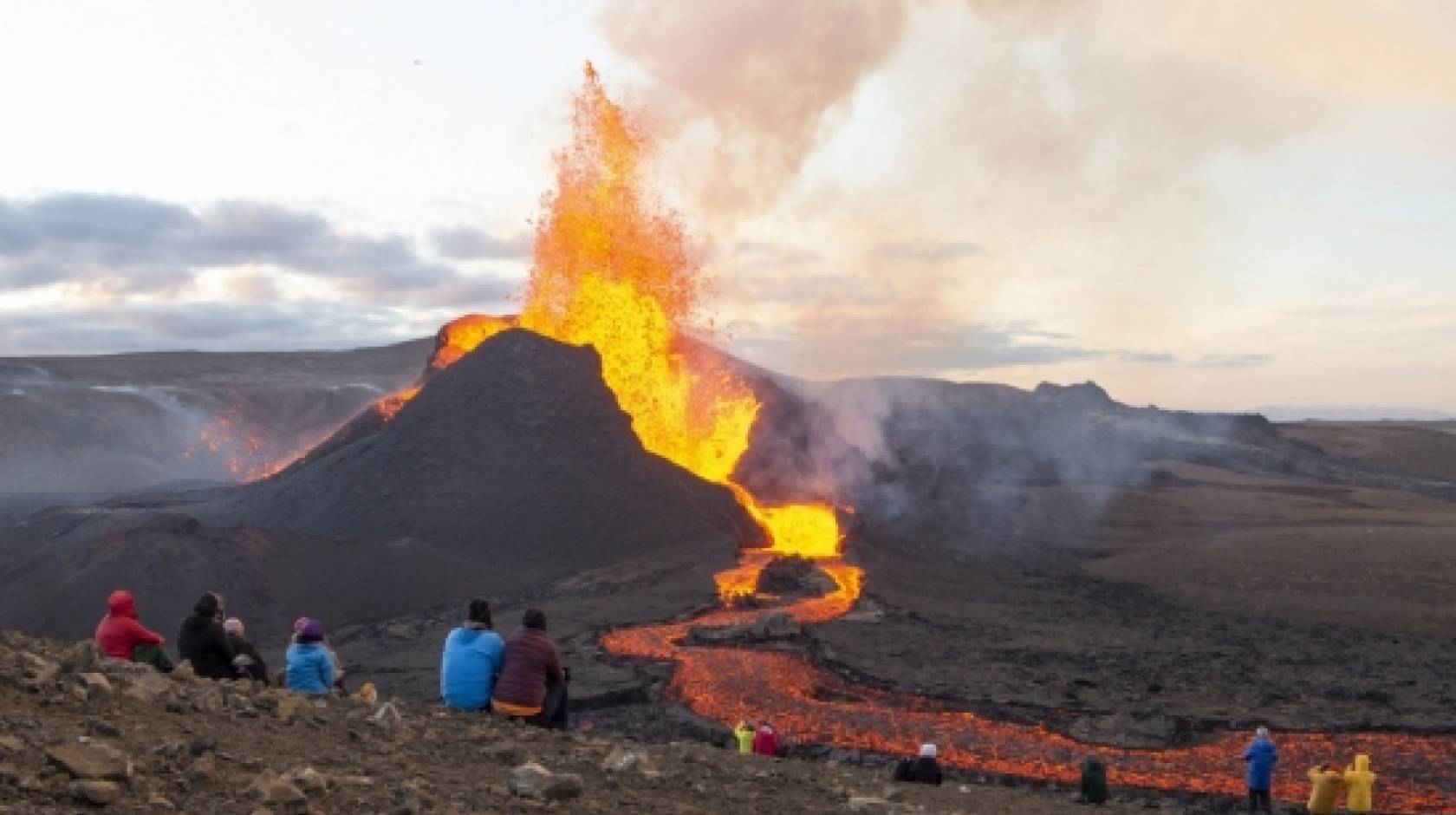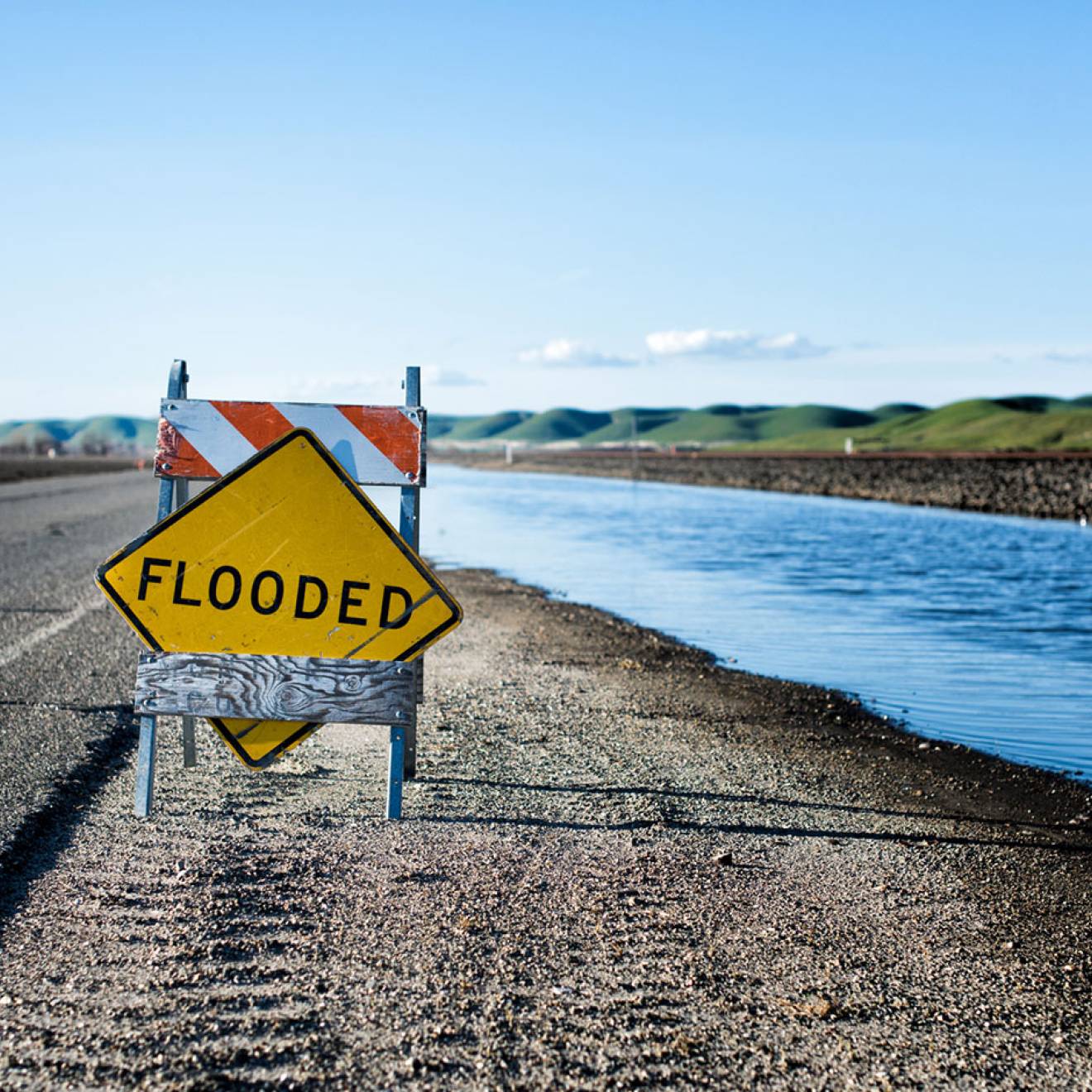Sonia Fernandez, UC Santa Barbara

It isn’t every day that we learn something that fundamentally changes how we understand our world. But for UC Santa Barbara Earth scientist Matthew Jackson and the thousands of volcanologists across the globe, such a revelation has occurred.
While sampling magma from the Fagradalsfjall volcano in Iceland, Jackson and his collaborators uncovered a process far more dynamic than anyone had assumed in the two centuries scientists have been studying volcanoes.
“Just when I think we’ve gotten close to figuring out how these volcanoes work, we get a big surprise,” he said.
The geologists’ findings are published in the journal Nature.
10,000 years in a month
It took a sabbatical, a pandemic and 780 years of melting subterranean rock to put Jackson in the right place and time to witness the birth of Fagradalsfjall, a fissure in the lowlands of southwest Iceland that split and exploded with magma in March 2021. By that time, he said, everyone on the Reykjanes Peninsula was ready for some kind of eruption.
“The earthquake swarm was intense,” he said of the 50,000 or so temblors — some magnitude 4 and higher — that shook the earth for weeks and kept most of Iceland’s population on edge.
But the sleep deprivation was worth it, and crankiness turned into fascination as lava bubbled up and spattered from the hole in the ground of the relatively empty Geldingadalur region. Scientists and visitors alike flocked to the area to see the newest section of the Earth’s crust form. They were able to get close enough to sample the lava contonuously from the start, thanks to winds that blew the noxious gases away, and the lava’s slow flow.
What the geologists, led by Sæmundur Halldórsson at the University of Iceland, were trying to find out was “how deep in the mantle the magma originated, how far beneath the surface it was stored before the eruption and what was happening in the reservoir both before and during the eruption.” Questions like these, though fundamental, are actually some of the biggest challenges for those who study volcanoes, due to the unpredictability of the eruptions, the danger and extreme conditions, and the remoteness and inaccessibility of many active sites.
“The assumption was that a magma chamber fills up slowly over time, and the magma becomes well mixed,” Jackson explained. “And then it drains over the course of the eruption.” As a result of this well-defined two-step process, he added, those studying volcanic eruptions do not expect to see significant changes in the chemical composition of the magma as it flows out of the earth.
“This is what we see at Mount Kīlauea, in Hawaii,” he said. “You’ll have eruptions that go on for years, and there will be minor changes over time.
“But in Iceland, there was more than a factor of 1,000 higher rates of change for key chemical indicators,” Jackson continued. “In a month, the Fagradalsfjall eruption showed more compositional variability than the Kīlauea eruptions showed in decades. The total range of chemical compositions that were sampled at this eruption over the course of the first month span the entire range that has ever erupted in southwest Iceland in the last 10,000 years.”
According to the scientists, this variability is a result of subsequent batches of magma flowing into the chamber from deeper in the mantle.
“Picture a lava lamp in your mind,” Jackson said. “You have a hot lightbulb at the bottom, it heats up a blob and the blob rises, cools and then sinks. We can think of the Earth’s mantle — from the top of the core to under the tectonic plates — operating much like a lava lamp.” As the heat causes regions of the mantle to rise and plumes form and move buoyantly upward toward the surface, he explained, molten rock from these plumes accumulates in chambers and crystallizes, gases escape through the crust and the pressure builds until the magma finds a way to escape.
For the first few weeks, as described in the paper, what erupted was the expected “depleted” magma type that had been accumulating in the reservoir, located about 10 miles (16 km) below the surface. But by April, evidence showed that the chamber was being recharged by deeper, “enriched” type melts with a different composition that were sourced from a different region of the upwelling mantle plume beneath Iceland. This new magma had a less modified chemical composition, with a higher magnesium content and a higher proportion of carbon dioxide gas, indicating that fewer gases from this deeper magma had escaped. By May, the magma that dominated the flow was the deeper, enriched type. These rapid, extreme changes in magma composition at a plume-fed hotspot, they say, “have never before been observed in near real-time.”
These changes in composition may not be so rare, Jackson said; it’s just that opportunities to sample eruptions at such an early stage are not common. For example, prior to the 2021 Fagradalsfjall eruption, the most recent eruptions on Iceland’s Reykjanes peninsula occurred eight centuries ago. He suspects that this new activity signal the start of a new, possibly centuries-long volcanic cycle in southwest Iceland.
“We often don’t have a record of the first stages of most eruptions because these get buried by lava flows from the later stages,” he said. This project, according to the researchers, allowed them to see for the first time a phenomenon that was thought to be possible but had never been witnessed directly.
For the scientists, this result presents a “key constraint” in how models of volcanoes around the world will be built, though it is not yet clear how representative this phenomenon is of other volcanoes, or what role it plays in triggering an eruption. For Jackson, it’s a reminder that the Earth still has secrets to yield.
“So when I go out to sample an old lava flow, or when I read or write papers in the future,” he said, “it’ll always be on my mind: This might not be the complete story of the eruption.”

